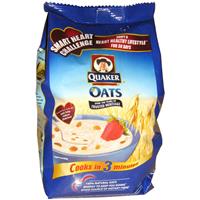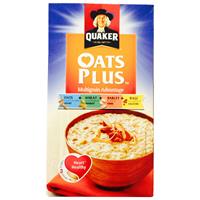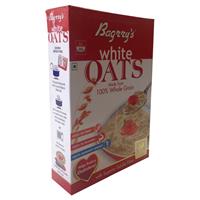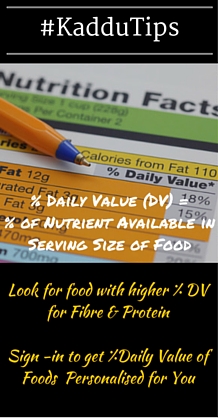
Kellogg's Extra Muesli Crunchy Fruit & Nut
Products in ‘Cereals & Muesli’ category range from 2.5 - 5

Current Product

- Compliments of Vitamins & MineralsThe micronutrients (Vitamins/Minerals) play an important role by ensuring proper functioning of cells and tissues.Each vitamin and trace mineral play a specific role in the body. For example, Vitamin C acts as antioxidant protecting cells from environmental damage, healing wounds and maintaining connective tissue whereas minerals like sodium, potassium and chloride function as electrolytes that assist in communication between cells necessary for nerve impulses and muscle contraction.Some products mimic the nature by adding artificial vitamins or minerals which have an identical form and function to those found in nature, but they are manufactured synthetically to meet extremely high standards of processed products.
- Fibre SourceProduct with decent amount of Dietary Fibre (5%-10% of day's recommended intake) is better than a similar one with zero or negligible amount of fibre) - at least it's a start!Packaged foods generally do not have Dietary fibre so a product with some amount of dietary fibre is always welcome.Fibre is not a nutrient but plays a key role in managing your body regularities - Bowel movement - Keeping constipation at bay, a control on Blood Sugar spike and check on blood cholesterol.However, follow the principle of balance and don't go overboard by eating only fibre rich food.
- High in Good FatGood Fat ! Yes that's correct, Fat is not all bad. The Unsaturated Fat is also referred to as the Healthier Fat as it is source of essential fats (Omega 3 & Omega 6). Fats and oils that we generally consume are rich in omega 6 so try an incorporate the essential omega 3 containing foods in your daily diet. To identify the healthy fat in a food product, look for the Monounsaturated Fat (MUFA) and Polyunsaturated Fat (PUFA) on the nutrition label of the food. The higher the share these types have in the Total Fat or Lipid the better is the product. This does not mean that you should have more of a product just because it is high in Unsaturated Fats. While selecting a food product prefer the one with energy from Fat not be more 30% of total energy available in the product and there is more of the unsaturated fats.
- High in SugarSugar is a source of Instant Energy which if not used mainly by muscles, is stored as Fat.One of the immediate side effects of High Sugar diet is insulin surge and increase in fat deposits in the body.Long term use of diets high in sugar are linked to increased risk for diabetes, obesity and contributes to cravings, mood swings, PMS, and a host of other conditions. Also, some studies suggest that its not FAT but sugar that is the cause for higher intake calorie and excess weight gain. Now no need to go to other extreme and drop sugar completely from your diet.So, it is better to limit the consuming products like these which are high in sugar or better still avoid them.
Disclaimer:Product Analysis is based on general practices in the field of Nutrition. Please check with or consult a qualified and licensed medical professional for its suitability to you.















